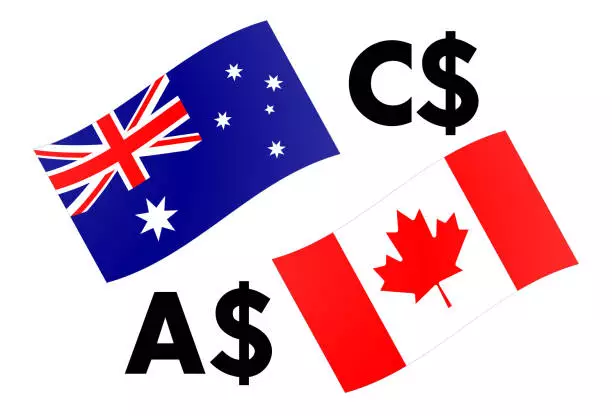The re-ignition of tension between the United States and its trading partners has given rise to Trade War 2.0, a term that captures the escalating economic confrontations not just between the U.S. and China, but also involving Canada, Mexico, and potentially other nations. The implications of this trade war are profound, leading to concerns about stagnant economic growth coupled with inflation—a phenomenon known as stagflation. This article provides a detailed analysis of the economic landscape shaped by these trade disputes, focusing particularly on the ramifications for major currency pairs like AUD/USD and USD/CAD.
Unlike the initial U.S.-China Trade War that commenced in January 2018, Trade War 2.0 is characterized by its broader scope—targeting not just Asian economies, but also traditional U.S. allies in North America and Europe. This diversification of economic conflict raises significant alarms regarding the overall sentiment toward global growth. As these tariffs take effect, fears of reduced international trade can result in a downward spiral for economies heavily reliant on exports. Such a scenario portends the potential re-emergence of stagflation concerns, as central banks may struggle to stimulate economic activity while grappling with rising prices stemming from trade barriers.
Traditionally, currencies of countries that rely heavily on commodities, such as Australia (the AUD, closely tied to iron ore and coal exports) and Canada (the CAD, associated with oil and gas), are sensitive to changes in global economic conditions. Current market dynamics have shifted in such a way that the AUD and CAD are likely to face downward pressure as the narrative of declining global growth looms. Speculative traders are now more likely to seek refuge in safer assets rather than commodity-exposed currencies, exacerbating selling pressure on currencies that were once resilient during periods of volatility.
Analyzing the AUD/USD currency pair reveals critical technical levels that traders must monitor for potential price action. The recent price action indicates a stalling rebound, encountering resistance at the downward-trending 50-day moving average around the 0.6330 mark. The signal from technical indicators such as the Moving Average Convergence Divergence (MACD) suggests that momentum remains bearish, reinforcing the argument for a continued decline. If key support levels are breached, especially a close below the significant 0.6120, the outlook remains grim. Conversely, should the pair manage to break above the 0.6330 resistance, there would be potential for a bounce back towards the 0.6440 point.
The USD/CAD pair is currently testing significant long-term resistance at 1.4690, a level that has held since January 2016. The Relative Strength Index (RSI) suggests that the pair is in overbought territory; however, there is no immediate bearish divergence, which implies that momentum could help push prices higher. Should prices dip below the key support level at 1.4300, it would raise concerns about a shift to a corrective phase, leading to the possibility of the pair revisiting previous lows around 1.3890.
The evolving narrative of Trade War 2.0 is set to have lasting ramifications on global economies and currencies. As economic conditions shift, stakeholders must remain vigilant, adapting trading strategies to the ever-changing landscape of tariffs and international relations. The potential for stagflation adds a layer of complexity that cannot be ignored, emphasizing the need for precise technical analysis and a robust understanding of underlying economic indicators. As we move forward, the challenge for currencies will be to withstand the dual pressure of domestic economic performance while navigating the tumultuous waters of international trade disputes.

